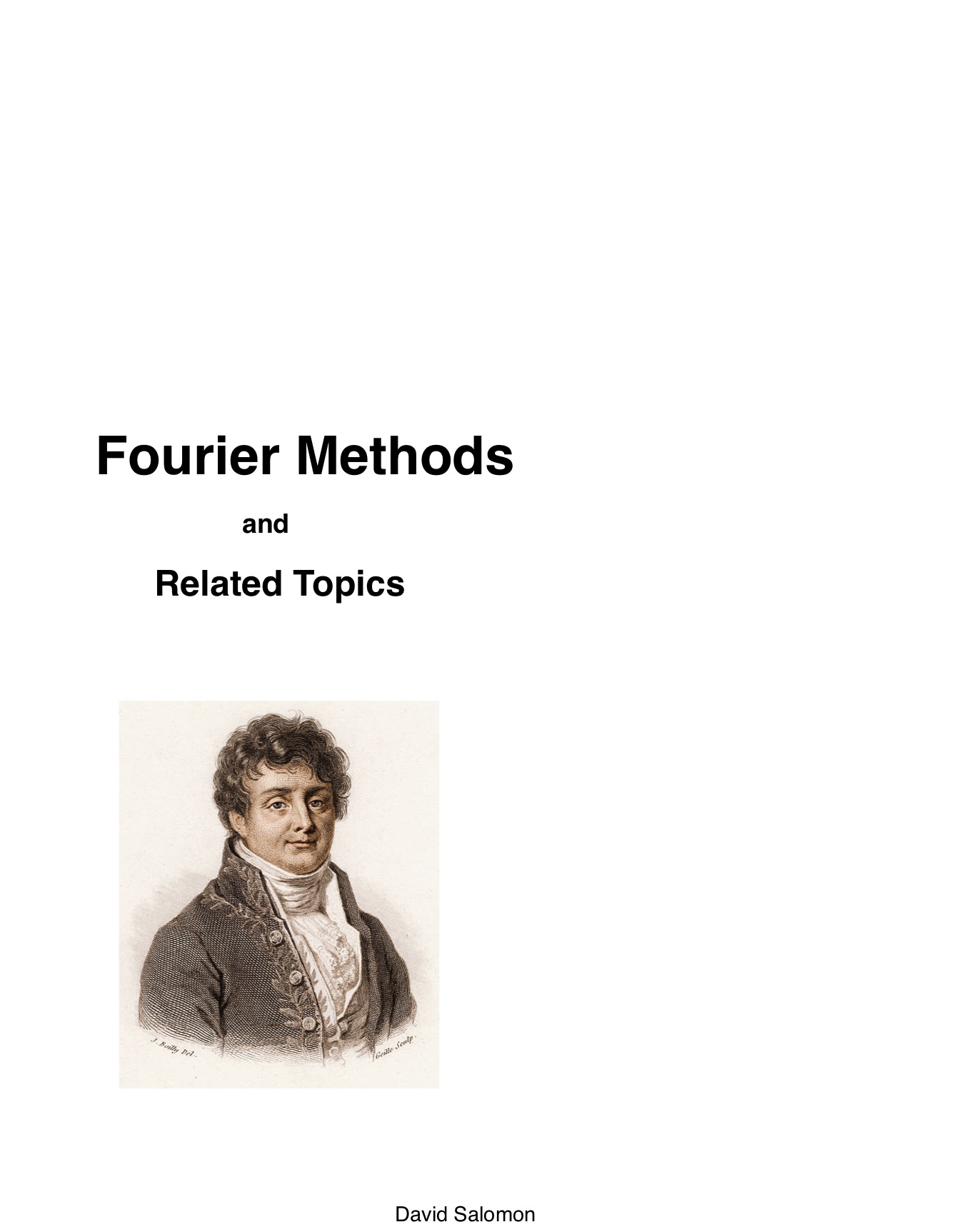Fourier Methods and Related Topics
1st Edition, January 2023
By David Salomon.
A free eBook. vi+169 pages, available here.
From the Preface
Goal of the Book
The main subject of this book is Fourier methods. Essentially, these methods take objects, either one-dimensional (waves) or two-dimensional (images), and break them up into elementary components that are pure sine waves.
Organization and Features
Chapter 1 introduces the Fourier methods.
Chapter 2 explains and illustrates sine waves.
Chapter 3 discusses the Fourier series.
Chapter 4 is a detailed discussion of the Fourier transform, especially its discrete case. Much attention is paid to the fast tranform (FFT).
Chapter 5 is devoted to the all-important and little known sampling theorem, and especially to reconstructing signals by means of the sinc function.
Chapter 6 described convolution in the 1D and 2D cases.
This book is aimed toward those who feel comfortable with mathematical and engineering concepts, who would like to know more about the above topics, and who are familiar with the Mathematica software. The code snippets included in the book are mostly in Mathematica and use only the most basic features of this software. They can serve as basic building blocks on which readers can build more complex programs.
I welcome any comments, suggestions and corrections. They should be emailed to [email protected]. An errata list and other information may later be added to this website.
Errors?
Any comments, suggestions, and corrections are welcome and should be emailed to the author at [email protected]. However, if you notice something missing, consider the following quote (from Mark Twain) “A successful book is not made of what is in it, but of what is left out of it.”

Table of Contents
Preface i
Introduction 1
1 Fourier Methods 9
1.1 Basic Terms 9
2 Sine Waves 13
2.1 One-Dimensional Sine Waves 13
2.2 Two-Dimensional Sine Waves 19
2.3 Three-Dimensional Sine Waves 19
3 Fourier Series 23
3.1 The Role of Complex Numbers 23
3.2 Deriving the Fourier Coefficients, 1 of 2 25
3.3 Deriving the Fourier Coefficients, 2 of 2 28
3.4 The Fourier Series and Least-Squares 29
3.5 Odd-Even Time-Saving Considerations 33
3.6 Examples 34
3.7 Two-Dimensional Fourier Series 38
3.8 The Complex Exponential Representation 38
3.9 The Discrete Fourier Series 40
4 The Fourier Transform 43
4.1 Preliminaries 43
4.2 The Continuous Fourier Transform 47
4.3 The Role of Complex Numbers 49
4.4 The Discrete Fourier Transform 55
4.5 The Inverse DFT 73
4.6 The Two-Dimensional DFT 82
4.7 2D Graphics Transform Example 97
4.8 The Fast Fourier Transform 103
4.9 Postscript 118
5 The Sampling Theorem 119
5.1 The Sampling Theorem 120
5.2 The Sampling Theorem: Reconstruction 128
6 Convolution 143
6.1 Example 143
6.2 2D Convolution 148
6.3 The Convolution Theorem 151
References 153
Answers to Exercises 155
Index 165
Quotation
What I have to say about this book can be found inside the book. --Albert Einstein
